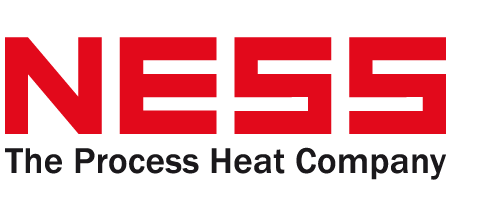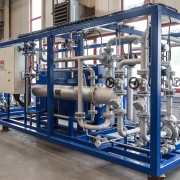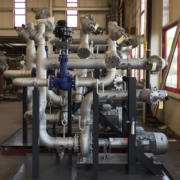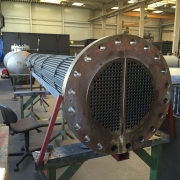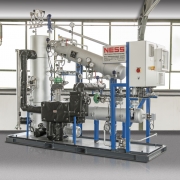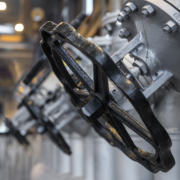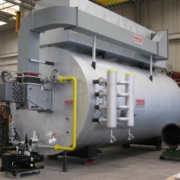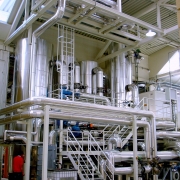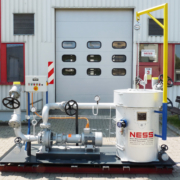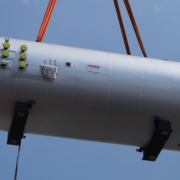Hydrogen technology in our lives – sustainably headed for the future!

Achim Schwarz
In March, an exotic addition joined the NESS car fleet: A hydrogen-powered fuel cell vehicle, the Toyota Mirai! What’s the background? We met with the initiator of the project – our sales engineer Achim Schwarz – for a short interview!
Achim, thank you very much for taking some time. As a sales engineer at NESS, it is not one of your main tasks to care about alternative energy vehicles in the fleet. But nevertheless, you did. For me, having known you for quite some time, you approached this topic very passionately! How did you come up with it?
Fortunately, most colleagues at NESS don’t think in terms of areas of responsibility. Just as I, working in sales, also oversee some projects beyond the actual sales process, I also like to keep my eyes and ears open for other areas.
During my studies, I was drawn in this direction several times. I first studied renewable energies and then energy technology, both with a focus on thermal energy systems. Both my Bachelor’s and Master’s theses dealt with the topic of power to gas. I completed my industrial internship at an energy supplier and the supervision of their natural gas and hydrogen filling stations was the focus of my tasks.
That was probably also the impetus why I’ve been driving a natural gas respectively biogas-powered vehicle privately for more than 5 years now. So trying out a hydrogen-powered fuel cell vehicle is the next logical step! Of course, I want my colleagues to participate in this trial.
And how did the car end up at NESS? Seriously, did you just go and say “Let’s test the car”?
Personally, I like the topic and always stay up to date. When our car fleet started to become small at the beginning of the year for our growing number of employees and with car rental prices remaining at a high level, I presented the idea to our managing directors. They found the topic exciting and gave their blessing.
So yes, in the end it was that simple. With us, you can suggest ideas like that at any time!
This form of propulsion – at least at present – still plays an absolutely niche role when it comes to passenger cars and the hydrogen fuel station network is still in its infancy. Doesn’t such a decision therefore require a fair amount of courage and investment costs?
No, fortunately that’s not necessarily the case! Our vehicle is rented for a period of one year at favourable conditions. It’s a full-service package, so you don’t have any additional costs apart from refuelling. Of course, that made the decision a lot easier!
The access card of the leading fuel station operator H2 Mobility, which operates the open portal h2.live (can also be used as an app), is easy to apply for and arrived rapidly. Furthermore, the network of stations is already well developed not only in the Stuttgart area, but also along most of the main traffic routes in Germany and many neighbouring countries.
Currently and in the coming years, many more hydrogen fuel stations will be added, largely driven by the demand for commercial vehicles, from which, however, passenger cars will also benefit. In our immediate vicinity, we are looking forward to the filling stations in Waiblingen by hy.waiblingen and in Schwäbisch Gmünd by Jet H2 Energy, which are to be built next year.
Why are battery electric vehicles not an equivalent alternative? As far as range is concerned, newer models are getting better and better!
The topic is not new to us. Some colleagues already drive battery-electric vehicles and plug-in hybrids, which is why we also have a wallbox at Ness. Of course, battery-electric cars with a comparable range have existed for some time, but there are two catches:
First, only about three quarters of the battery capacity is used for fast charging of battery electric cars on long distances. This is because the charging speed drops sharply from 80-85% charge level. This means that to achieve a range comparable in practice to our Mirai 1, even a highly efficient sedan-shaped vehicle would need a usable battery capacity of about 80 kWh (even more in winter, because with fuel cell vehicles low outside temperatures mean practically no loss of range). And that, mind you, only with a new battery that has not yet lost any capacity – our Mirai, which I use as a comparison here, already has a whopping 188,000 km on the clock!
And second, the refuelling time of only 3-5 minutes is a big advantage for us, as opposed to the 20 minutes it takes even for the fastest battery electric vehicles at 800 V charging stations. Our people on the road should not lose time unnecessarily, that is the wish of everyone involved. Especially as the motto “time is money” really applies here! It doesn’t matter what our people are doing, they always have to be paid the same! That’s why, when it comes to service assignments, travel time is billed to our customers the same as working time…
That sounds plausible. But in the end, doesn’t it make more sense to directly charge a vehicle with electricity rather than produce hydrogen with first and then refuel it? According to the media, producing hydrogen is always extremely energy-intensive.
Apart from the fact that we are becoming more and more aware of our dependence on critical raw materials and have to pay attention to resource efficiency as a whole: To begin with, these bold statements only apply to the pure drive energy when using the vehicle.
If – with an expert background – you take a look at the assumptions on which they are based and what is actually possible (and is also increasingly being implemented), they become noticeably less alarming. If one then takes a life-cycle view of the entire process chain, i.e. also considers the energy used in the production of the vehicle and its energy storage system, there is usually not much substance left in these scary stories.
The vehicle has been in the fleet since March. Has there been any feedback yet?
Just about all colleagues who have used it so far are mostly satisfied. In particular, the drivetrain and ride are very comfortable.
It should be noted that amoung the users, there were also those who would have immediately turned down the idea of a battery electric vehicle and the associated charging times for their routes. I think that rather important, because quite a few people in the population as a whole also belong to this fraction!
Yes, many are still somewhat sceptical, but as is so often the case, these are almost exclusively those who have not yet used the vehicle at all.
And then there are colleagues like our service technician Tim Fuchsloch, who is always open to new things. He grabbed the Mirai and immediately drove it to a job in Belgium! Of course I like to see such open-mindedness. I hope that more of my colleagues will show the same.
With our customers and on the road, the vehicle always generates curiosity and serious interest, not a trace of the blanket discrediting of the technology that one is often confronted with.
Next up, the vehicle will also get a Ness-designed livery. We are already curious to see how this will be received!
That sounds interesting! Will you keep us up to date on how the trial is going and also provide us with more information on hydrogen as an energy carrier?
Of course!
